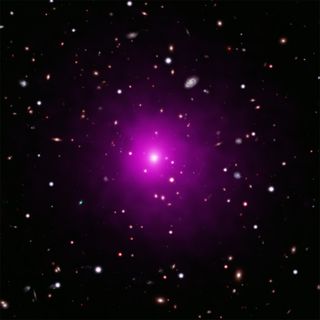
A team of astrophysicists, led by scholars from the Institute for Advanced Study, has developed an innovative technique to search for black hole light echoes...
Read More

A team of astrophysicists, led by scholars from the Institute for Advanced Study, has developed an innovative technique to search for black hole light echoes...
Read More
Astronomers have unveiled the first image of the supermassive black hole at the centre of our own Milky Way galaxy. This result provides overwhelming evidence that the object is indeed a black hole and yields valuable clues about the workings of such giants, which are thought to reside at the centre of most galaxies...
Read More
An enormous black hole keeps slipping through astronomers’ nets. Supermassive black holes are thought to lurk at the hearts of most, if not all, galaxies...
Read More
Recent Comments